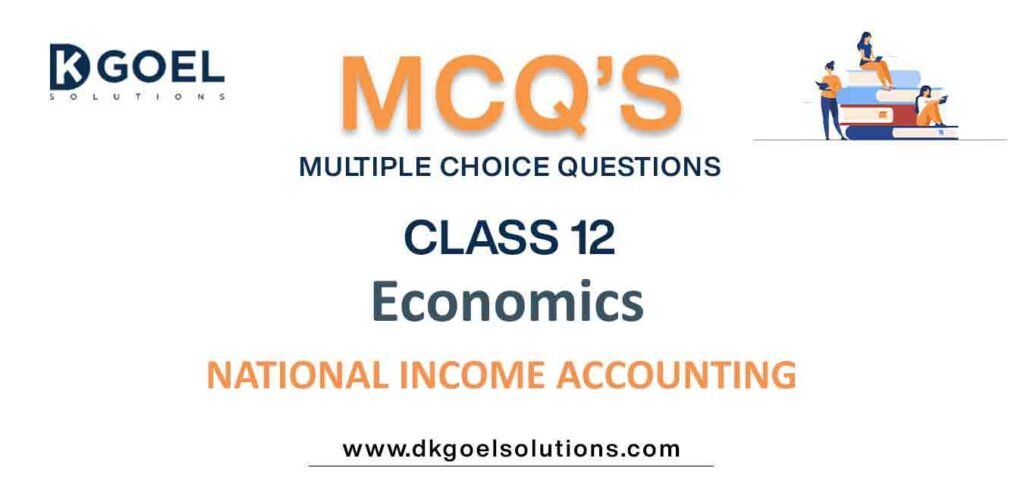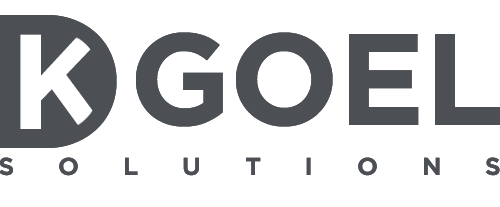MCQs for Economics Class 12 with Answers Chapter 8 National Income Accounting
Students of class 12 Economics should refer to MCQ Questions Class 12 Economics National Income Accounting with answers provided here which is an important chapter in Class 12 Economics NCERT textbook. These MCQ for Class 12 Economics with Answers have been prepared based on the latest CBSE and NCERT syllabus and examination guidelines for Class 12 Economics. The following MCQs can help you to practice and get better marks in the upcoming class 12 Economics examination
Chapter 8 National Income Accounting MCQ with Answers Class 12 Economics
MCQ Questions Class 12 Economics National Income Accounting provided below have been prepared by expert teachers of grade 12. These objective questions with solutions are expected to come in the upcoming Standard 12 examinations. Learn the below provided MCQ questions to get better marks in examinations.
Question. Increase in the stock of capital is known as Options:
a) Capital loss
b) Capital gain
c) Capital formation
d) None of these
Answer
C
Question. Which of the following leads to unexpected obsolescence? Options:
a) Change in demand
b) Natural calamities
c) Change in technology
d) None of these
Answer
B
Question. Value added method measured the contribution of which of the following within the domestic territory of a country?
a) One producing enterprise only
b) All producing enterprises
c) A few producing enterprises
d) None of these
Answer
B
Question. As a result of double counting, national incomes is:
a) Over- estimated
b) Under- estimated
c) Correctly – estimated
d) Not estimated for the entire year of accounting
Answer
A
Question. Basis of the difference between the concepts of market Price and Factor Cost is:
a) Direct taxes
b) Indirect taxes
c) Subsidies
d) Net indirect taxes
Answer
D
Question. Which of the following is not correct?
a) NNP at Market Price = GNP at Market Price + Depreciation
b) NDP at Market Price = NNP at Market Price – Net Factor Income from Abroad
c) NDP at Factor Cost = NDP at Market Price – Indirect taxes + Subsidies
d) GDP at Factor Cost = NDP at Factor Cost + Depreciation
Answer
A
Question. In the production of sugar, sugarcane is Options:
a) A final good
b) A capital good
c) An Intermediate good
d) None of these
Answer
C
Question. Those goods which satisfy human wants directly are called Options:
a) Intermediate goods
b) Consumer goods
c) Capital goods
d) None of these
Answer
B
Question. Income of the family is the example of which variable? Options:
a) Stock
b) Flow
c) Both stock and flow
d) Neither stock nor flow
Answer
B
Question. Capital goods are those goods Options:
a) Which are used in the production process for several years
b) Which are used in the production process for few years
c) Which Involve depreciation losses
d) Both (a) and (c)
Answer
D
Question. Net capital formation causes Options:
a) Increase in production capacity
b) Increase in depreciation
c) Increase in profits
d) Increase in cost
Answer
A
Question. Which of these is a limitation in the measurement of social welfare using GDP at constant prices as an index?
a) Increase in population size
b) Change in working conditions
c) Composition of production
d) All of these
Answer
D
Question. Which of the following leads to depreciation? Options:
a) Normal wear and tear
b) Damages due to floods
c) Damages due to market – crash
d) None of these
Answer
A
Question. Which one is included in National Income?
a) Winning from Lottery
b) Milk Purchase by a dairy shop
c) National Debt Interest
d) None of these
Answer
D
Question. If a farmer sells wheat to miller for ₹ 500 and miller sells flour to baker for ₹ 700 and baker sells bread to consumer for ₹ 1000, then total value added by miller and baker is:
a) 500
b) 300
c) 1700
d) 1200
Answer
A
Question. A firm hires the services of a chartered accountant and pays fees. For the firm, payment of fess is:-
a) Final expenditure
b) Capital expenditure
c) Investment expenditure
d) Intermediate expenditure
Answer
D
Question. Those goods which satify human wants directly are called:
a) intermediate goods
b) consumer goods
c) capital goods
d) none of these
Answer
B
Question. Increase in the stock of capital is knows as:
a) capital loss
b) capital gain
c) capital formation
d) none of these
Answer
C
Question. Net domestic product at factor cost is less than national income when:
a) Net factor income from abroad is positive
b) Net factor income from abroad is negative
c) Net factor income from abroad is zero
d) Net exports are positive
Answer
A
Question. Which of the following is the cause of expected obsolescence?
a) Natural calamities
b) Change in demand
c) Change in technology
d) Both b) and c)
Answer
D
Question. A car running between Delhi and Agra at a speed at 120 Km/h includes:
a) only stock variables
b) only flow variables
c) both a stock and a flow variable
d) none of these
Answer
C
Question. Which one leads to factor cot?
a) Market price – Indirect taxes
b) Market price – Net indirect taxes
c) Market price + Indirect taxes
d) Market price + Net indirect taxes
Answer
B
Question. Which of the following is not a part of profits?
a) Corporate tax
b) Dividends
c) Royalty
d) Retained earnings
Answer
C
Question. Market price of the final goods and services (Including depreciation) produced within the domestic territory of a country during an accounting year is called:
a) GDP at Market Price
b) GNP at Factor Cost
c) NNP at Factor cost
d) GDP at Factor Cost
Answer
A
Question. Which one includes depreciation?
a) GNP at Market Price
b) NNP at Market Price
c) NNP at Factor Cost
d) None of these
Answer
A
Question. Which one leads to Factor Cost?
a) Marker Price – indirect Taxes
b) Marker Price – Net Indirect Taxes
c) Marker Price + Indirect Taxes
d) Marker Price + Net Indirect Taxes
Answer
B
Question. Net investment is equal to Options:
a) Gross investment + depreciation
b) Gross investment – depreciation
c) Gross investment ×depreciation
d) Gross investment ÷ depreciation
Answer
B
Question. Domestic product is equal to:
a) National product + net factor income from abroad
b) National product – net factor income from abroad
c) National product ÷ net factor income from abroad
d) National product × net factor income from abroad
Answer
B
Question. Real national income means:
a) National income at current prices
b) National income at factor prices
c) National income at constant prices
d) National income at average prices of the past 10 years
Answer
C
Question. Which of the following is not included in final consumption expenditure?
a) Household expenditure on food
b) Government final consumption expenditure
c) Household expenditure on education
d) Expenditure on raw material
Answer
D
Question. A quantity measured per unit of time period is known as
a) Stock variable
b) Flow variable
c) Inventory
d) None of these
Answer
B
Question. Which one is correct?
a) National Income = NDP at Factor Cost – Net Factor Income from Abroad
b) GNP at Factor Cost = GNP at Market Price + Net Indirect Tax
c) Personal Income = Private Income – Corporate Tax – Corporate Saving
d) Disposable Income = Saving of Household Sector – Consumption of Household Sector
Answer
C
Question. Which of the following items is not included while estimating GNP of a country at market prices?
a) Salaries and wages before taxes
b) Indirect taxes
c) Remittances by NRIs
d) Subsidy
Answer
C
Question. Which of the following items is not included while estimating national Income by Income method?
a) Rent
b) Mixed income
c) Fixed investment
d) Undistributed profits
Answer
C
Question. Which of the following is a semi-durable goods? Options:
a) Radio
b) Clothes
c) Milk
d) Petrol
Answer
B
Question. Which of the following is not transfer payment?
a) Interest on national debt
b) Retirement pensions
c) Old- age pensions
d) Donations
Answer
B
Question. GNP at market price is measured as:
a) GDP at market price – Depreciation
b) GDP at market price + Net factor Income from abroad
c) GNP at market price + subsidies
d) NDP at factor cost + Net factor income from abroad
Answer
B
Question. Which one refers to Net Indirect Taxes?
a) Indirect taxes + subsidies
b) Indirect taxes – subsidies
c) Direct taxes – subsidies
d) None of the above
Answer
B
Question. Which of the following is a flow variable
a) Consumption
b) Wealth
c) Quantity of money
d) None of these
Answer
A
Question. In India, suppliers of money are:
a) Government of the country
b) Banking system of the country
c) Both (a) and (b)
d) None of these
Answer
C
Question. Value of output is equal to
a) Sales+ Change in Stock
b) Sales + Closing Stock
c) Sales + Opening Stock
d) Sales- opening Stock
Answer
A
Question. Income of the Family is the example of which variable?
a) Stock Variable
b) Flow Variable
c) Both stock and flow
d) Neither Stock nor flow
Answer
B
Question. Which of the following is not included in estimation of NI?
a) Subsidies Lunch
b) Old Age Pension
c) Free Medical Facilities served in office to employees
d) Construction of a House
Answer
B
Question. National Income = Domestic income when:
a) NFIA is Positive
b) NFIA is Negative
c) NFIA is Zero
d) None of the above
Answer
C
Question. Which of the following is not a flow variable?
a) Income
b) Capital Formation
c) Supply of Money in a country
d) Leakage of water from a tank
Answer
C
Question. Which of the following item will not be included while calculating NDP mp.
a) Private final consumption expenditure
b) Consumption of fixed capital
c) Govt Final consumption expenditure
d) Net Export
Answer
B
Question. Which of the following will not be included while calculating national income by income method?
a) Wages and Salaries
b) Royalty
c) Scholarship
d) Profit
Answer
C
Question. NNP fc is called:
a) National Income
b) Domestic Income
c) Personal Income
d) Private Income
Answer
A
Question. Consumption of fixed capital refers to fall in the value of fixed assets…
a) Due to normal wear and tear
b) Due to abnormal wear and tear
c) Due to foreseen obsolescence
d) Due to normal wear and tear and foreseen obsolescence
Answer
D
Question. NVA fc Equals to
a) Sum of factor payments
b) Sum of Current transfer Payments
c) Sum of Capital Transfer Payments
d) Net Current transfer from rest of the world
Answer
A

We hope the above multiple choice questions for Class 12 Economics for Chapter 8 National Income Accounting provided above with answers based on the latest syllabus and examination guidelines issued by CBSE, NCERT and KVS are really useful for you. National Income Accounting is an important chapter in Class 12 as it provides very strong understanding about this topic. Students should go through the answers provided for the MCQs after they have themselves solved the questions. All MCQs have been provided with four options for the students to solve. These questions are really useful for benefit of class 12 students. Please go through these and let us know if you have any feedback in the comments section.
